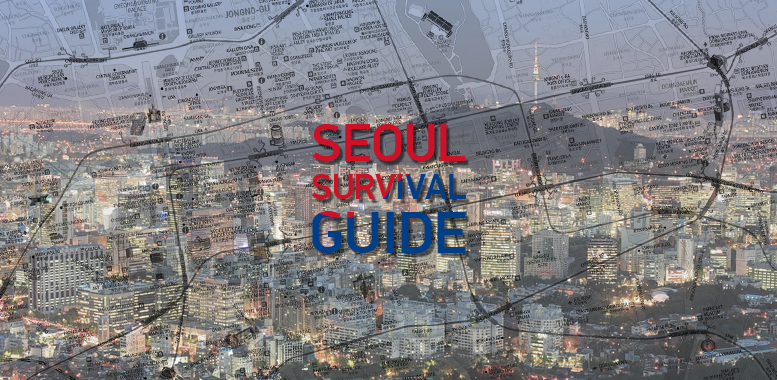Are you planning your first time visit to the city of lights? Maybe you already booked the flight, you have everything perfectly planned out, or maybe you’re still in the dreamy adventure planning phase. You’ll get there!
Whichever it is, welcome to “Mai’s Declassified Seoul Survival Guide”. My new fortnightly series where I will advice you on the do’s and don’ts of Seoul city. But let’s not get ahead of ourselves. Remember, while spontaneity is well and good, planning and being prepared for the basics makes for a much more fun stay!
So: Before you leave…
Do your research
Find out what’s going on in the time period you will be there. Seoul and South Korea has loads of great festivals through the year, as well as special celebrations for a variety of events. Look around the internet, Google a bit and you should easily find a schedule for the bigger events.
Check the weather
While South Korea has mostly a similar weather pattern as we do here, with 4 seasons and a basic cycle of them, there are differences. For one, most weather conditions are more extreme. Winter gets cold, windy and icy. Make sure you layer up! Summer, on the other hand, is boiling, humid and in Seoul: hardly any wind. Pack light, wavy clothes, but maybe leave the butt shorts and crop tops behind. While the Korean culture is more and more accepting of westerners, it doesn’t hurt to make as good an impression as possible.
Another thing to remember is that South Korea has a rainy season. This is usually sometime between July and August, and the rain pours while the temperature still being very warm.
Generally the recommended time to visit South Korea is the spring and fall. In late April/early May the cherry trees are blossoming and generally the weather will be very good. Similarly, coming towards September and October, the trees are starting to go colourful and the weather will be more bearable. None the less, when I was there for 3 weeks in September, we still had a normal daily temperature of about 30°C.
Plan, but leave space for changes
This correlates a bit with the first point, but I decided to include it still. Plan your time wisely. Seoul and it’s surrounding areas have a load of different attractions and tourist spots, and you want to make sure to catch the important ones. Trust me: There’s nothing sadder than coming back from two weeks in the city of lights, and not having been to Namsan Tower.
Filter out the events you absolutely need to catch while there. Make a schedule in your head or write it down, just so you have an idea of what you’d like to do on different days. But make sure not to schedule too tightly, or you’ll miss the chance to be spontaneous, and miss out on the most fun part of travelling.
Don’t pack your bags full
Trust me on this one. Boy oh boy. Seoul is a Mecca for shoppoholics. Myeong-dong is filled to the brim with cute make-up stores, and Hongdae is great for clothes shopping. Anything you’ll need you can find there, and so much more. Pack your favourite items, your basics and necessities. But don’t stuff your suitcase to the brim… save that for when you’re going back home.
Be smart about your hand luggage!
Let’s face it, best case scenario is you’ll be on the go for about 15 hours all together. Think this through. My best advice is, be comfortable. Instead of a huge jacket, wear a nice big sweater or cardigan that you can drape over yourself if you get cold, and use as extra support for your neck. A good book makes time pass, and music can make the “Airplane Ears” a little more bearable. If you have a tablet to combine, even better.
Most long distance flights like this will provide screens for each seat, and a selection of movies and entertainment. But I do advice you to be a little picky about your flight company, and check that you’ll not be 100% uncomfortable the entire time.
You will be served food, but we all know that’s rarely worth the £500 you paid. Bring some small snacks for when you get peckish and a toothbrush and hand/face moisturiser for when you’ve inevitably fallen asleep for a few hours. It does wonders.
Work on your sleeping pattern
It’s a good idea to plan your journey to be as adapted to the Korean time zone as possible when you arrive. If your flight comes in at 2 am, try to stay awake for the last few hours or the flight, so you’ll be able to go to sleep when you get to the hotel. And if you arrive in the morning, sleep as much as possible so you won’t waste an entire day on jet lag. Seoul awaits!
That is it for this week’s Declassified Seoul Survival Guide. Stay tuned for next time, when I’ll be writing about what to do when you’re actually there!





